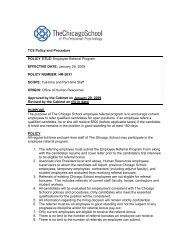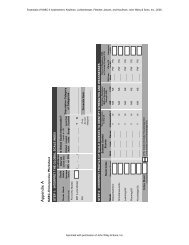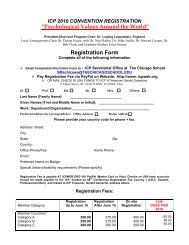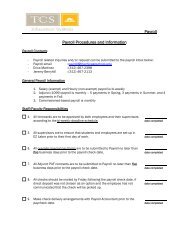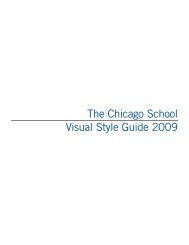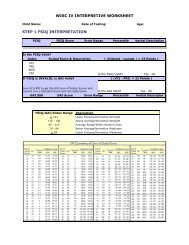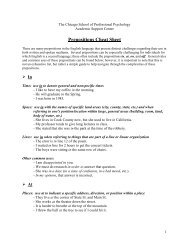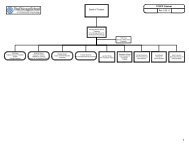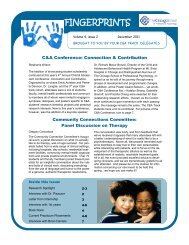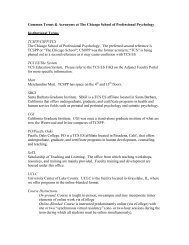YOUR VERY OWN TF-CBT WORKBOOK
YOUR VERY OWN TF-CBT WORKBOOK
YOUR VERY OWN TF-CBT WORKBOOK
Create successful ePaper yourself
Turn your PDF publications into a flip-book with our unique Google optimized e-Paper software.
Processing the Traumatic Experience(s) Page 24<br />
In Vivo Mastery of Trauma Reminders Page 25<br />
Conjoint Session – Sharing the Trauma Narrative Page 26<br />
Conjoint Session – Enhancing Future Safety and Development Pages 27-28<br />
Goals, Review, Graduation Pages 29-31<br />
Following the structure of the <strong>TF</strong>-<strong>CBT</strong> model, the therapist meets individually with child<br />
each week to complete the above (and other supplemental) treatment activities. Then the<br />
therapist meets with the parent individually to work with the caretaker on the same<br />
component, to teach him/her the skills to support the child at home and for the caretaker<br />
to process his/her own feelings about the trauma. Sharing the activities completed by the<br />
child in the workbook each week can be a helpful way to work with the parent on the<br />
treatment components, in addition to supplemental resources geared toward parents.<br />
Parents usually appreciate seeing their children’s artwork and writing, and sharing these<br />
provides the opportunity for the therapist to increase the parent’s empathy and<br />
understanding of the child’s experience. The children also generally like the fact that<br />
their parents will get to see their work. Again, use your clinical judgment if the child<br />
does not want you to share a particular page with a parent right away or if sharing is<br />
contra-indicated in any way. Some games or activities may be used during conjoint<br />
sessions in which the child and parent can practice and share together. For example,<br />
children may enjoy teaching their caretaker the Feelings Charades game (Page 8) or Belly<br />
Breathing games (Page 14) and playing together in session. It is important to have<br />
caretakers involved in the safety component (Pages 27-28). Again, flexibility is<br />
important!<br />
Homework activities can be assigned each week for the child, caretaker, or dyad at the<br />
discretion of the therapist. The workbook includes a relaxation activity that is labeled as<br />
homework (it can also be taught or practiced in session) and recommends daily practice<br />
of the deep breathing techniques. You may create games for the dyad to play as<br />
homework, assign thought logs, etc. Use your imagination, and tap into the individual<br />
child’s strengths and interests when planning your interventions.<br />
For further information on <strong>TF</strong>-<strong>CBT</strong> and its components, please refer to the treatment<br />
manual:<br />
Cohen, J.A., Mannarino, A.P., & Deblinger, E. (2006). Treating trauma and traumatic<br />
grief in children and adolescents. New York: Guilford Press.<br />
An additional resource is the on-line <strong>TF</strong>-<strong>CBT</strong> training at: http://tfcbt.musc.edu/ .



